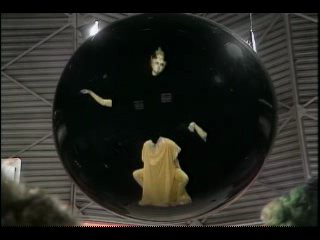| "Yes, yes, I am boring...but given all the movies, sometimes you get a baddie like me!" |
“My dear girl, don't flatter yourself. What I did this evening was for Queen and country. You don't think it gave me any pleasure, do you?"
“But of course, I forgot your ego, Mr. Bond. James Bond, the one where he has to make love to a woman, and she starts to hear heavenly choirs singing. She repents, and turns to the side of right and virtue...but not this one!"
1) The reason this is my least favorite of the Connery Bonds is that even though it is more coherent than the two that follow it, it is aggressively dull. This film drags, it has very few engaging moments, and is a chore to watch.
It’s also the only Bond film in the official canon produced by perpetually water-logged thorn in the Broccoli family’s side, Kevin McClory. Make of it what you will.
2) And the dullness begins with the extended sequence at the health club. The thing that makes this rather lengthy and boring stretch of film unendurable is how inconsequential and coincidental it all is. Even though Connery does stumble across the imposter that is part of Largo’s plot to blackmail the world, his discovery is not integral to his cracking the case at all. In all it’s just twenty hours of him running around in shorts and stuff.
3) The weirdest thing about the overall plot is how frontloaded the intrigue is; so much of the first forty five minutes is spent with Fiona and her plastic surgery’d pawn getting everything set up so the bombs will end up off the coast of Nassau....followed quickly by an hour and twenty-some minutes of Bond wandering around looking for trouble. It’s hard not for the second and third acts to not be a let down after all the running around of the first act.
4) Of course, this leads us into one of the other major problems with this film--namely, Emilio Largo is a terribly dull villain. Now I know Adolpho Celi is an amazing character actor; he’s been a highlight of many policia films, as well as Danger: Daibolik. But here he comes off as a pumped up gangland accountant, even with all his accouterments. Some of this may be because Celi was dubbed, but there’s something inherently flawed with the performance and the character that makes his a non-starter.
| SCUBA!!!!!!! |
5) And while we’re on the subject of non-starters...I will admit that Claudine Auger is drop-dead gorgeous...but there’s a difference between being gorgeous and being sexy, and Auger’s Domino is cold and stiff, making her one of the least interesting Bond Girls to date...no matter how hot the scene involving the poison spine is.
6) But luckily, Auger is the only dull Bond girl in this film. Martine Bestwick’s Paula and--especially--Luciano Paluzzi’s Fiona Volpe are wonderful additions to the Bond mythos...to the point where I wished that Fiona was the main villain Bond came up against, and not Largo. Fiona is so fun, reveling in her nastiness while being flirty with Bond, that her every scene is a delight.
7) Fiona plays a part in what has to be the highlight of the film--namely, the cat-and-mouse chase between her, Largo’s henchmen and Bond through Junkcano, referred to as ‘the Nassau Mardi Gras.’ Apparently director Terence Young shot this sequence using handheld cameras, and it manages to increase the paranoia and suspense of the chase without losing any coherence. Granted, the whole sequence ends kinda dopily, but other than that...choice!
| Yep, evil...but I'd do her... |
8) If you don’t like scuba diving, this film is going to be truly painful for you. There are massive stretches of ‘suspenseful’ scuba fight scenes and similar action, and they’re dreadful boring. No amount of orchestration will be able to convince you otherwise.
9) But you know, I would put up with all this underwater noodling and the dull villain and main Bond girl if Bond actually acted like an actual spy, and not like some schmoe who’s stumbling around in the dark guessing at clues. Hell, Bond deduces the bombs have to be in Nassau because...well, he sees a photo of Domino in a bikini and naturally assumes that’s where it is. The way the script makes it sound, it’s more like Bond decides the weapons are there because he wants to see Domino in a bikini in the flesh.
10) The thing I find so amusing about Rik Van Nutter’s version of Felix Leiter is how it seems that McClory found an actor who looked as much like Jack Lord as possible, dressed him up like Jack Lord...but made the actor behave like a goof. Leiter in this film is here mainly to drive Bond around and, in a key scene, get punched in the gut by him.
Overall...dull, uninteresting and full of filler, this is the first real big let down of the Bond series (although it’s gold compared to what comes down the pike during the later part of the Moore era).




